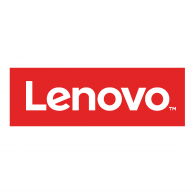
As the PC industry is on the verge of decline and is shifting toward mobile devices, such as smartphones and tablets over the last couple of years, leading PC manufacturer Lenovo, has already prepared itself for the huge shift in a ‘PC-Plus world’ since many years.
While the Chinese company continues to expand its lead as the number one PC maker on one hand, it is also aggressively pursuing fast-growing markets for tablet devices and smartphones.Rahul Agarwal, Executive Director – Commercial Business, Lenovo India speaks about Lenovo’s survival strategies and also about the company’s plans, especially for the India market.
CT: What are Lenovo’s priority areas for Indian market this fiscal?
Agarwal:Lenovo continued to expand in the world with an all-time high market share of 17.7% in FY 13-14 according to IDC. The company ranks number two in the broader PC (PC and tablet) market, and third in smart-connected devices (which covers PC, tablet and smartphone) globally. In India, we are one of the top three PC brands, with a 14.9 % market share (as per IDC JFM 2014). Our “Protect and Attack” strategy, which is our long-term formula for success, is helping us drive record market share, improved profitability and a more balanced business. It consists of protecting our strengths in the core PC business and driving profitability, while attacking faster growing Mobile, Enterprise and Ecosystem/Cloud businesses.

In India, while we continue to follow this broader philosophy, we are simultaneously building new pillars for growth, positioning the company to become an even stronger and more diversified technology leader. The PC industry still offers plenty of opportunities for profitable growth, the tablet market will continue to grow, driven by the consumer desire for mobile devices, and smartphones have seen faster growth than the traditional PC market. Today, we have a solid play in each of these segments, and have been introducing a variety of products that we believe will help to become one of the leaders in PC Plus.
CT: The enterprise segment contributes 40-45% of Lenovo’s entire business in India. Are you planning to sustain this growth momentum or aiming for higher growth and how?
Agarwal: Our commercial business is the largest revenue contributor (about 40-45%) for Lenovo India, with a current market share of 22.5% (as per IDC). We have a very strong product portfolio in the enterprise segment, which is second to none. The ThinkPad, which is our flagship commercial product, is the #1 in its category globally. We constantly strengthen our offering by introducing new form factors, and adding innovative, advanced and award winning product features. Our investments in innovations continue to drive growth through differentiation. For example, Lenovo is a clear leader in defining the new “multimode” PC space, with products such as Yoga and Helix. Additionally, we are witnessing a tremendous growth potential in the commercial tablet segment owing to the proliferation of mobile devices at workplaces. With our industry-leading range of enterprise tablets, we expect to see good traction in the commercial tablet segment in this financial year.
CT: Currently which are the verticals where you see maximum growth for commercial business? What are your plans for those verticals?
Agarwal:Lenovo’s analysis of its customer base reveals that the enterprise customer values product quality and reliability above everything else. Keeping that in mind, we have introduced a wide range of enterprise products for a varied user base across verticals. While the global market for commercial PCs has seen muted growth in the last few quarters, we expect that demand for commercial PCs in India will continue to be bolstered by strong investment from the government and education vertical in the current fiscal. Furthermore, we are seeing heightened interest from our enterprise customers across verticals, in new form factors such as ultraportables and hybrids. In keeping with this, we launched the ThinkPad Twist, focused on our SMB customers, ThinkPad X1 Carbon, which is a premium business segment ultrabook, and the ThinkCentre TINY, which isthe world’s smallest desktop PC and one of the most energy efficient full featured desktops. We will soon be releasing the Android 4.4 KitKat update for several of its recently launched mid-range smartphones, specifically 5 of its S series smartphones across markets.
CT: Lenovo is taking the cloud route in an effort to sell more devices. Can you tell us something about the new initiative?
Agarwal: As more organizations realize the importance of technology as a business enabler, we expect a substantial interest in mobility based devices and technologies like cloud computing. We will continue investing in innovative products and solutions enabled for the cloud era, and have planned a range of cloud enabled products for enterprise customers in the near future.
CT: In this era of BYOD, how do you plan to attract enterprise customers? Also how do you think BYOD affects the enterprise space as a whole?
Agarwal: Due to consumerization of IT, we see a push and pull based approach to initiatives like BYOD, as companies embrace the trend to enhance employee satisfaction and productivity in the workplace. We see BYOD as an inevitable actuality and we are working on supporting this by increasing the number of mobile computing devices available for our enterprise customers. Starting from a commercial range of tablets with enterprise grade security, premium and mid-range ultraportable notebooks, and multimode devices such ThinkPad Yoga and Twist, we have products for every customer need and specifically for a mobile workforce.
While BYOD is here to stay, safeguarding data assets of the enterprise will always remain a priority for CIOs and CTOs. Hence, we see greater implementation of enterprise-grade mobile computing devices, as they provide added security features, with the same (if not better) quality of user experience.
